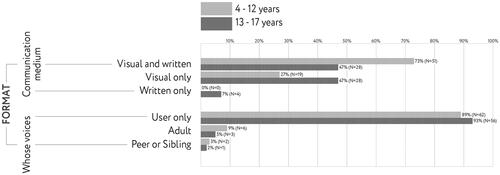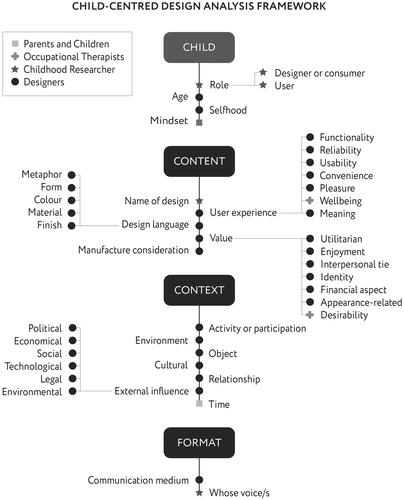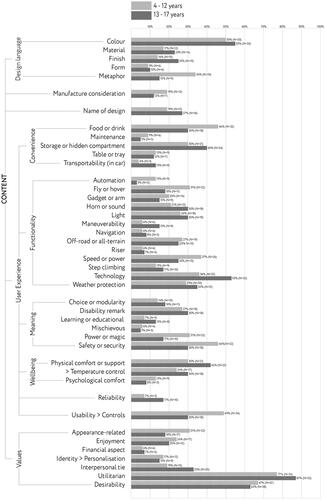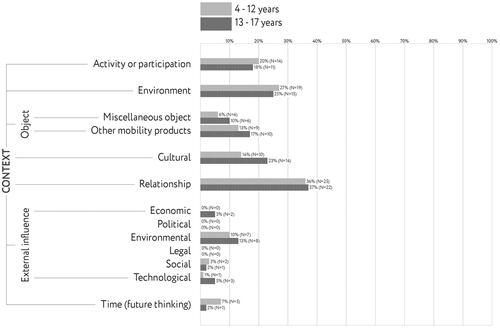Figures & data
Figure 1. Qualitative data formats of children’s “dream wheelchair’ designs.

Table 1. References used to construct the Child-centred Design Analysis Framework.
Figure 2. Child-centred design analysis framework.

Figure 3. “Dream wheelchair” design analysis results – child.

Figure 4. “Dream wheelchair” design analysis results – content.

Figure 5. “Dream wheelchair” design analysis results – context.

Figure 6. Maslow’s hierarchy of needs [Citation58].
![Figure 6. Maslow’s hierarchy of needs [Citation58].](/cms/asset/5b130706-cf77-4a81-9602-6e7b150ab596/iidt_a_2071487_f0006_b.jpg)
